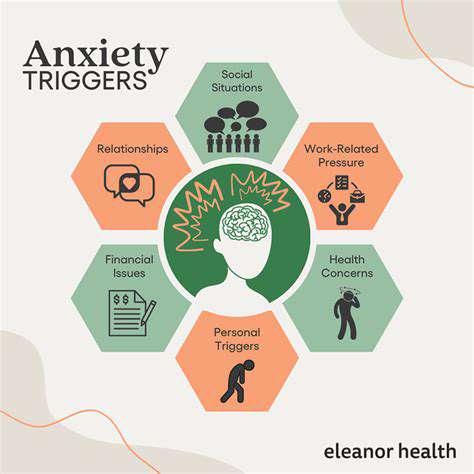Common Causes of Anxiety Attacks and How to Address Them

Understanding Anxiety Attacks
Often called panic attacks, these sudden surges of intense fear create overwhelming distress. They typically combine severe physical reactions with emotional terror, leaving sufferers feeling completely powerless. Beyond the immediate suffering, these episodes can disrupt careers, relationships, and overall quality of life.
Learning about the body's alarm system helps manage attacks. When the brain perceives danger (real or imagined), it triggers physical changes like racing heart, labored breathing, and profuse sweating - all designed for survival but miserable during false alarms.
Identifying the Triggers
Pinpointing what sparks anxiety attacks proves essential for controlling them. Triggers range from internal sources like painful memories to external situations including stressful events or social demands. Spotting these patterns allows people to develop targeted defenses against their unique triggers.
Maintaining a symptom diary helps uncover connections between specific situations, thoughts, and subsequent anxiety episodes.
Physical Symptoms of Anxiety Attacks
While symptoms vary, common physical signs include heart palpitations, breathing difficulties, chest discomfort, sweating, shaking, lightheadedness, and nausea. These intense bodily reactions frequently convince sufferers they're facing imminent catastrophe, fueling the attack's severity.
Proper medical evaluation remains crucial to distinguish anxiety symptoms from other health conditions requiring different treatments.
Cognitive Strategies for Coping
Thought management forms a cornerstone of anxiety control. This involves identifying exaggerated or irrational thoughts and replacing them with balanced perspectives. Methods like present-moment awareness, encouraging self-statements, and perspective-shifting help break anxiety's mental patterns.
Relaxation practices including controlled breathing and systematic muscle relaxation also help counteract anxiety's physical manifestations.
Behavioral Techniques for Prevention
Gradual exposure methods help prevent attacks by building tolerance to triggers. Under professional guidance, individuals slowly confront feared situations, developing confidence in their ability to cope without panic.
Foundational health habits - consistent movement, nutritious eating, and adequate rest - create physiological resilience against anxiety's onslaught.
Seeking Professional Help
When anxiety attacks become frequent or debilitating, expert assistance makes all the difference. Mental health specialists provide customized strategies and support for understanding and overcoming anxiety disorders. They can also determine if medication might help restore chemical balance during treatment.
Therapy combined with appropriate medication often yields the best outcomes for persistent anxiety issues.
Lifestyle Modifications for Anxiety Management
Daily choices form the bedrock of anxiety control. Nutritionally balanced meals, regular physical activity, and sufficient nightly sleep collectively lower stress vulnerability. These fundamentals strengthen the body's natural defenses against anxiety triggers.
Cutting back on stimulants like caffeine and practicing relaxation methods such as meditation provide additional anxiety-buffering benefits.